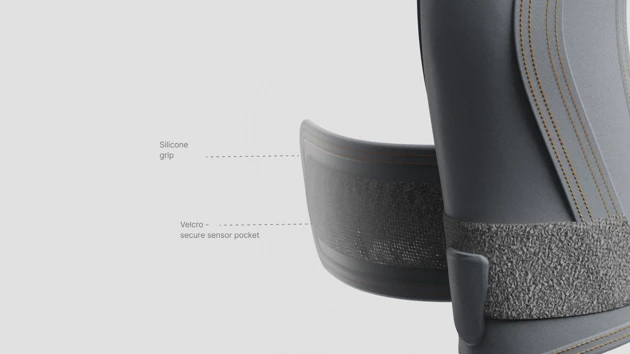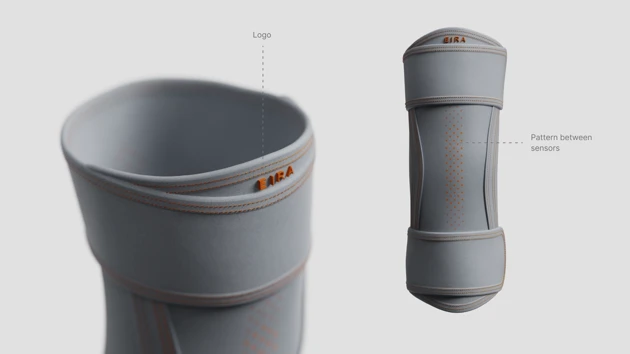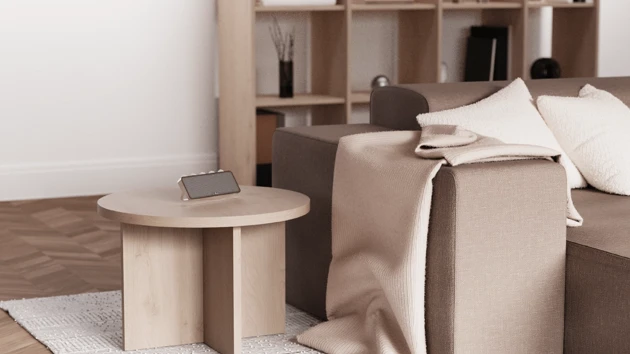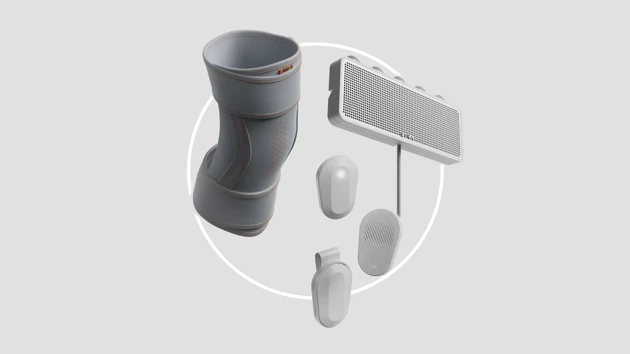Visits to three rehabilitation clinics to explore how movement analysis could support therapy and to gain insights into current workflows and challenges.
EIRA - Movement analysis in orthopedic rehabilitation for elderly
As populations age and healthcare systems face increased demand, effective home rehabilitation is essential for maintaining mobility and independence among older adults. Yet, many existing solutions fail to meet their physical, cognitive, and emotional needs. EIRA is a human-centered rehabilitation system developed in collaboration with MT-FoU at Norrlands University Hospital. It combines a wearable sensor and a charging dock that integrates movement analysis and provides intuitive, screen-free feedback. Sensor data connects to healthcare providers, enabling remote monitoring and personalized therapy adjustments. Field research, expert interviews, and user testing revealed a strong need for accessible and motivating rehabilitation tools that support long-term use at home. The final design reduces cognitive load, blends into everyday environments, and empowers users through subtle, reassuring feedback. EIRA bridges the gap between clinical care and home recovery, supporting mobility, independence, and confidence in elderly rehabilitation.
Project Information
As life expectancy rises, increasing numbers of older adults are living with orthopedic conditions that affect mobility and independence. Despite this growing need, most rehabilitation tools are not designed with elderly users in mind. Complex interfaces, digital dependency, and clinical aesthetics often alienate those who need support the most.
EIRA is a human-centered rehabilitation system created to bridge this gap. Developed in collaboration with MT-FoU at Norrlands University Hospital, the system supports older adults recovering from surgeries or injuries affecting gait and balance. EIRA combines a wearable movement sensor with a companion charging dock that provides calm, analog feedback. It empowers users to stay engaged in their rehabilitation at home, where they are supported by healthcare and relatives.
EIRA also supports connected care. Data gathered through movement analysis is securely shared with healthcare providers, enabling remote monitoring and personalized therapy adjustments. The system empowers patients while giving clinicians the tools to deliver more effective follow-up care beyond the clinic walls.
Methods
The project followed a human-centered, research-driven design approach, grounded in ethnographic fieldwork, expert interviews, iterative prototyping, and co-creation.
Field research was conducted across three clinical contexts: a geriatric rehabilitation ward, a neurorehabilitation center, and a sports medicine clinic. These visits revealed systemic challenges such as the lack of follow-up after discharge, low therapy adherence at home, and the emotional toll of recovery without support. Patients often left hospitals with printed instructions and no clear sense of how they were progressing, leading to frustration, isolation, and in many cases, discontinued rehabilitation.
Expert interviews with physiotherapists, occupational therapists, and rehabilitation researchers deepened these insights. Professionals stressed the need for simple, motivating tools tailored to older adults with low digital literacy, and expressed a strong desire for better ways to monitor patient progress remotely. Their feedback highlighted the opportunity to rethink the role of feedback and motivation in rehabilitation.
User interviews with elderly participants (aged 72–81) revealed that many felt ashamed or uncertain when they couldn’t complete exercises as instructed. They emphasized the need for tools that feel familiar, trustworthy, and emotionally supportive. Screen-based solutions were often seen as cold or overwhelming.
Technology analysis helped map the landscape of existing rehabilitation solutions, from wearables and digital apps to robotic systems. Many of these products, though technically advanced, fell short in terms of accessibility, ease of use, or integration into daily routines.
Ideation workshops with clinicians, older users, and fellow designers focused on translating research insights into meaningful design opportunities. The team explored how therapy could be made more intuitive, engaging, and seamlessly embedded into home life. Core themes included motivation, clarity, emotional reassurance, and analog feedback.
Prototypes were tested in usability sessions with older users to evaluate key features like the strap’s comfort and fastening, feedback mechanisms, and the role of the charging dock. Observations and interviews informed multiple refinements to ensure the system was both functionally sound and emotionally approachable.
Result
The final concept, EIRA, is a rehabilitation support system that blends physical simplicity with digital intelligence, offering an emotionally attuned experience for older users and a practical tool for clinicians.
Key components
- Wearable sensor: A discreet motion sensor is embedded in a textile pocket, worn above the knee using a soft, adjustable strap. The placement ensures reliable gait and mobility data while prioritizing comfort and independence. The strap uses velcro for ease of use, even for users with reduced motorics.
- Charging dock: Designed to resemble a calm home object, the dock communicates status and progress using soft light. When docked, the sensor automatically transfers data to care teams.
- Remote connectivity: Clinicians can access movement data to track patient progress and tailor rehabilitation plans, enabling better continuity of care after hospital discharge.
The system is built around six design principles
- No instructions required – intuitive use through form and feedback
- Be calm, not smart – low-demand interaction without screens
- Blend into daily life – warm, home-friendly form language
- Minimize cognitive and physical load – effortless to use
- Respect the analog – avoids unnecessary digital barriers
- Build trust through clarity – provides gentle, reassuring signals
EIRA is not just a tool, it is a daily companion. It transforms rehabilitation from a chore into a subtle, integrated part of everyday life. It supports autonomy, builds confidence, and makes progress visible in a way that feels natural and reassuring.
EIRA is designed for those often left behind by digital solutions. It empowers elderly users to continue rehabilitation on their own terms, while keeping healthcare professionals connected, creating a truly inclusive and sustainable model for home-based care.
UID25 | Nina Nording – Grad project presentation
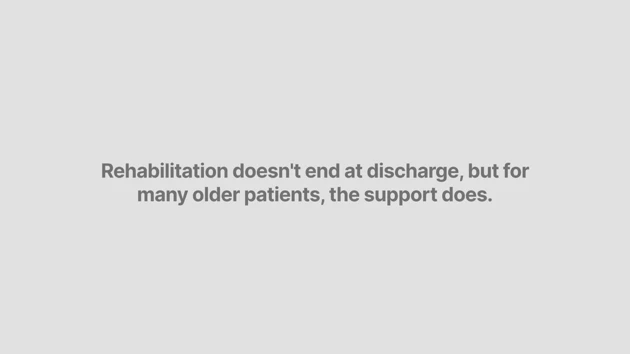
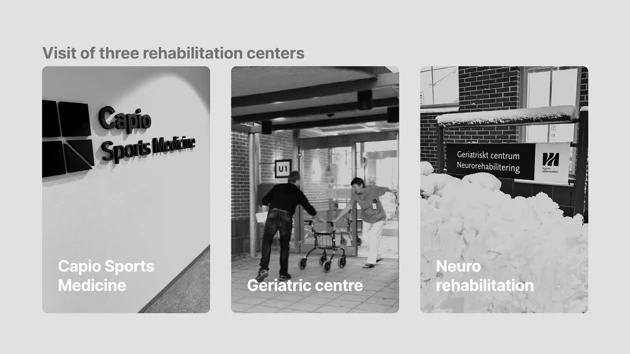
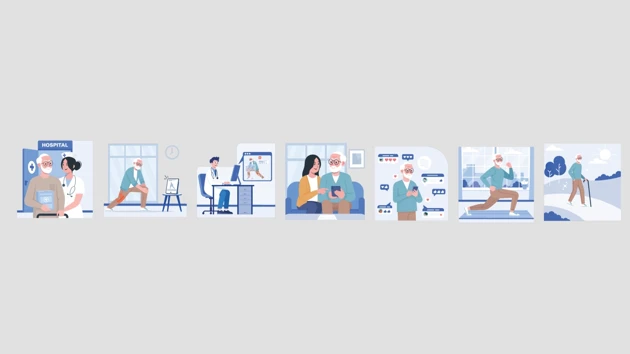
Future user journey envisioning a scenario where patients are discharged with personalized support for home-based rehabilitation.
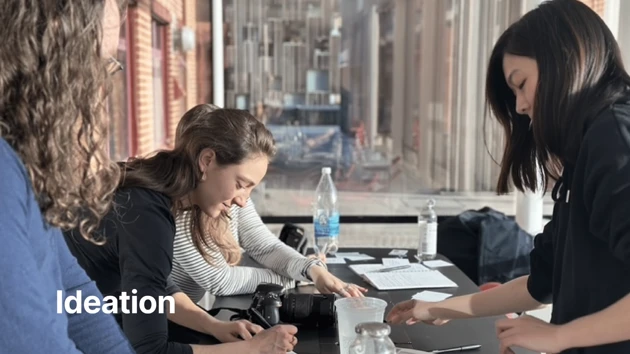
Ideation workshops involving classmates, healthcare professionals, users, and the collaboration partner to co-develop meaningful design directions.
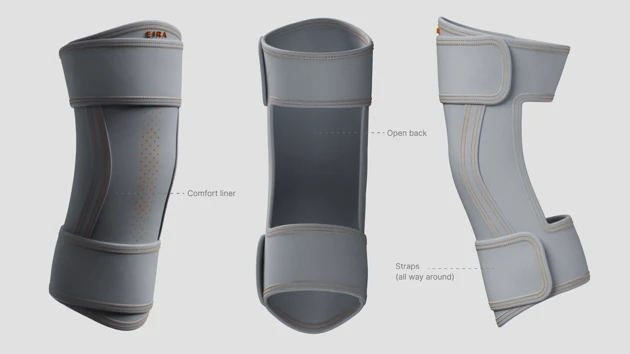
Detailed view of the final product.
